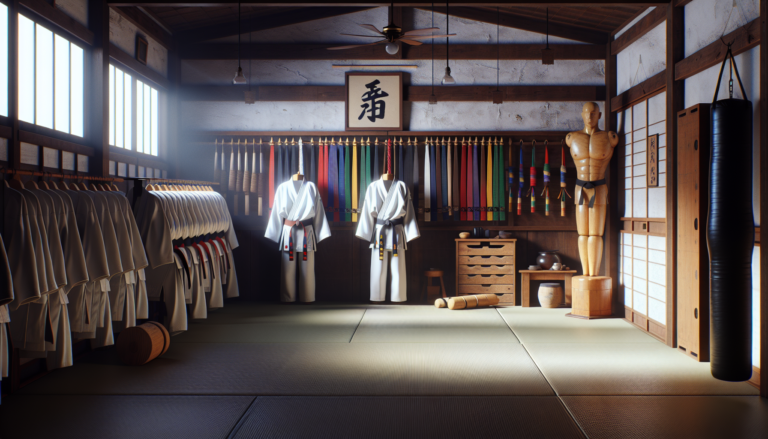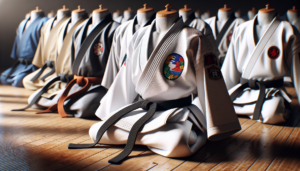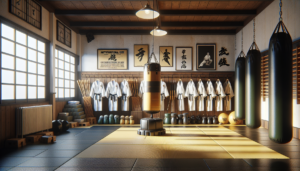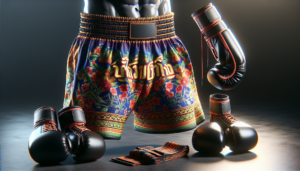Introduction to Martial Arts and Karate
Martial arts encompass a wide range of combat practices and systems originating from various cultures, particularly in Asia. These disciplines incorporate techniques, strategies, and philosophies related to self-defense, physical fitness, and personal growth. Among the most well-known martial arts is Karate, a traditional Japanese art that has gained global popularity.
Defining Martial Arts
The term “martial arts” is a broad umbrella that covers numerous disciplines, each with its unique history, techniques, and principles. Some of the most prominent types of martial arts include Karate, Judo, Taekwondo, Kung Fu, Aikido, and Krav Maga. While each style has its distinct characteristics, they all share the common goal of developing physical prowess, mental discipline, and self-defense skills.
Martial arts can be categorized based on their focus and techniques. For instance, striking arts like Karate and Taekwondo emphasize punches, kicks, and strikes, while grappling arts such as Judo and Brazilian Jiu-Jitsu focus on throws, joint locks, and ground fighting. Some martial arts, like Krav Maga, prioritize practical self-defense techniques for real-world situations, while others, such as Tai Chi, emphasize slow, graceful movements that promote relaxation and inner harmony.
What is Karate?
Karate, which translates to “empty hand” in Japanese, is a martial art that originated in Okinawa, Japan. It is a striking art that utilizes punches, kicks, knee strikes, and open-hand techniques for self-defense. Karate’s history can be traced back to the 17th century when Okinawan martial arts were influenced by Chinese martial arts, particularly Kung Fu.
Modern Karate is divided into four main traditional styles: Shotokan, Goju-ryu, Shito-ryu, and Wado-ryu. Each style has its unique kata (forms), training methods, and emphasis on specific techniques. However, all styles of Karate share the common goal of developing physical strength, mental discipline, and character through rigorous training and practice.
Key Differences Between Karate and Other Martial Arts
While Karate is a martial art, not all martial arts are Karate. Each discipline has its unique features, philosophies, and training methods that set it apart from others. Let’s explore some of the key differences between Karate and other popular martial arts.
Karate vs. Taekwondo
Taekwondo is a Korean martial art that emphasizes high, fast kicks and spinning techniques. While both Karate and Taekwondo are striking arts, Taekwondo places a greater emphasis on kicking techniques, particularly head-height kicks. Karate, on the other hand, focuses more on hand techniques and low kicks.
Another difference lies in their competition styles. Taekwondo competitions often involve full-contact sparring with protective gear, while Karate competitions traditionally focus on point sparring, where light contact is made and points are awarded based on technique and precision.
Karate vs. Judo
Judo is a Japanese martial art that focuses on throws, grappling, and submissions. Unlike Karate, which is primarily a striking art, Judo emphasizes close-quarters combat and using an opponent’s energy against them. Judo practitioners wear a heavy cotton uniform called a judogi, which is designed to withstand the grip and pull of throws and grappling techniques.
While both Karate and Judo originate from Japan, their training methods and techniques differ significantly. Karate focuses on striking and blocking, while Judo emphasizes grappling and throwing techniques.
Karate vs. Kung Fu
Kung Fu is a broad term that encompasses various Chinese martial arts styles. Each style has its unique techniques, philosophies, and training methods. Some styles, such as Wing Chun, focus on close-range combat and quick, precise strikes, while others, like Bagua Zhang, emphasize circular movements and evasion.
Compared to Karate, Kung Fu styles often incorporate more fluid, circular movements and a greater emphasis on traditional Chinese philosophy and medicine. Karate, in contrast, tends to have a more linear approach to techniques and a stronger focus on physical conditioning and mental discipline.
Similarities Between Karate and Other Martial Arts
Despite their differences, Karate and other martial arts share some common ground. These similarities are rooted in the fundamental principles and benefits of martial arts training.
Philosophical Foundations
Many martial arts, including Karate, are built upon philosophical foundations that emphasize discipline, respect, and personal growth. Karate philosophy stresses the importance of developing oneself physically, mentally, and spiritually through dedicated training and adherence to core values such as integrity, humility, and perseverance.
Similarly, other martial arts have their own guiding philosophies. For example, Aikido philosophy emphasizes harmony, peace, and the resolution of conflict through non-violent means. Kung Fu often incorporates principles from traditional Chinese philosophy, such as the balance of yin and yang.
Training Methods
While each martial art has its unique techniques, many martial arts training methods share common elements. These include:
| Training Element | Description |
|---|---|
| Kihon (basics) | Practicing fundamental techniques such as stances, strikes, kicks, and blocks |
| Kata (forms) | Performing pre-arranged sequences of techniques to develop muscle memory and understanding of application |
| Kumite (sparring) | Engaging in controlled combat with a partner to apply techniques in a more dynamic setting |
| Physical conditioning | Building strength, endurance, flexibility, and agility through exercises like push-ups, squats, and stretching |
These training elements are common across many martial arts, although the specific techniques and methods may vary.
Components of Karate
To better understand what sets Karate apart as a martial art, it’s essential to examine its key components. Karate training consists of three main elements: Kihon, Kata, and Kumite.
Kihon: Basic Techniques
Kihon refers to the fundamental techniques that form the foundation of Karate. These include stances, blocks, punches, strikes, and kicks. Karate practitioners spend a significant amount of time drilling these basic techniques to develop proper form, power, and control.
Some examples of Kihon techniques include:
- Zenkutsu dachi (front stance)
- Gedan barai (downward block)
- Choku zuki (straight punch)
- Mae geri (front kick)
By mastering these fundamental techniques, Karate practitioners build a strong base upon which they can develop more advanced skills.
Kata: Forms and Patterns
Kata are pre-arranged sequences of techniques that simulate combat scenarios. Each Karate style has its own unique kata, which vary in length, complexity, and emphasis on specific techniques. Practicing kata helps develop muscle memory, balance, coordination, and understanding of how techniques can be applied in a more dynamic context.
Some well-known Karate kata include:
- Heian Shodan (Shotokan style)
- Sanchin (Goju-ryu style)
- Bassai Dai (Shito-ryu style)
- Kushanku (Wado-ryu style)
Kata are often performed in Karate competitions, where practitioners are judged on their technical accuracy, power, and expression.
Kumite: Sparring
Kumite is the sparring component of Karate, where practitioners apply their techniques against a live opponent in a controlled setting. There are various types of kumite, ranging from pre-arranged drills to free sparring.
In traditional Karate kumite, the emphasis is on control, precision, and good sportsmanship. Practitioners are expected to demonstrate proper technique and control their strikes to avoid causing injury to their partners. Kumite helps develop timing, distance management, and the ability to adapt techniques to a dynamic situation.
Benefits of Practicing Martial Arts and Karate
Engaging in martial arts training, whether it’s Karate or another discipline, offers numerous benefits for practitioners of all ages and skill levels.
Physical Benefits
Regular martial arts training can lead to significant improvements in physical health and fitness. Some of the physical benefits include:
- Increased strength and muscle tone
- Improved cardiovascular endurance
- Enhanced flexibility and range of motion
- Better balance and coordination
- Improved reflexes and reaction time
Practicing martial arts is a full-body workout that engages multiple muscle groups and energy systems, leading to well-rounded physical development.
Mental and Emotional Benefits
In addition to physical benefits, martial arts training offers numerous mental and emotional advantages, such as:
- Increased self-confidence and self-esteem
- Improved focus and concentration
- Greater self-discipline and self-control
- Reduced stress and anxiety
- Enhanced problem-solving skills
The challenges and achievements experienced through martial arts training can have a profound impact on personal growth and development.
Self-Defense Skills
One of the primary reasons people choose to study martial arts is to develop practical self-defense skills. While the goal of martial arts training is not to promote violence, having the knowledge and ability to defend oneself in a dangerous situation can provide a sense of confidence and security.
Martial arts like Karate teach practitioners how to effectively strike, block, and evade attacks, as well as how to assess and de-escalate potentially dangerous situations. However, it’s important to remember that the best form of self-defense is always to avoid confrontation when possible.
Conclusion: Is Martial Arts Karate?
In conclusion, while Karate is a type of martial art, not all martial arts are Karate. Each discipline has its unique history, techniques, and philosophies that set it apart from others. Karate is a striking-based Japanese martial art that emphasizes punches, kicks, and blocks, with a focus on discipline, character development, and self-defense.
When compared to other martial arts like Taekwondo, Judo, and Kung Fu, Karate’s distinct features become apparent. However, Karate and other martial arts share common elements, such as philosophical foundations and training methods that emphasize discipline, respect, and personal growth.
Ultimately, whether one chooses to practice Karate or another martial art, the benefits of regular training are numerous, including improved physical fitness, mental discipline, emotional well-being, and practical self-defense skills. By understanding the similarities and differences between various martial arts, practitioners can make informed decisions about which discipline best suits their goals and interests.






